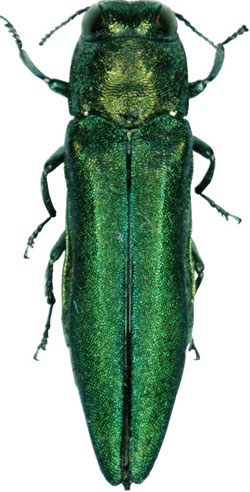Dry fall and winter weather stresses plants and predisposes them to disease and insect pests. Often the following problems develop after dry falls and winters.

Winter injury (desiccation, “burn”) of evergreens, results from lack of water. Warm, sunny, windy days promote transpiration but there may not be enough water in soil for plant roots to replace the lost moisture. This transpirational water loss can happen so quickly that plants simply cannot keep up. During times when soil is frozen, roots do not function and cannot absorb replacement water. Evergreens may show needle browning all over the plant, on the northwest (windward) side or southwest side if there’s reflected heat. Management strategies include fall and winter watering. New growth in the spring will mask the brown needles if the plant survived.
Cytospora canker is a fungal pathogen found on many woody plants. Initial symptoms may appear simply as dead twigs or branches. Closely examine stems in and around the dead area. Look for cankers (sunken, discolored lesions), a symptom of the disease. Some affected plants will ooze or “gum” in and around the canker. The Cytospora fungus is a weak pathogen that further weakens or kills stressed plants. Prune out affected branches and improve plant culture. For more information, see fact sheet 2.937, Cytospora Canker at http://extension.colostate.edu/topic-areas/yard-garden/cytospora-canker-2-937/
Insects attracted to stressed and dying trees include bark beetles and borers such as Ips, lilac ash borer and ash bark beetle. Attempt to improve growing conditions, including watering, if normal spring moisture does not occur. Trunk sprays may be warranted, depending on the pest. Generally these are applied just prior to adult flight. For more information on pesticide choices and timing, see fact sheet 5.530 “Shade Tree Borers” at http://extension.colostate.edu/topic-areas/insects/shade-tree-borers-5-530/



